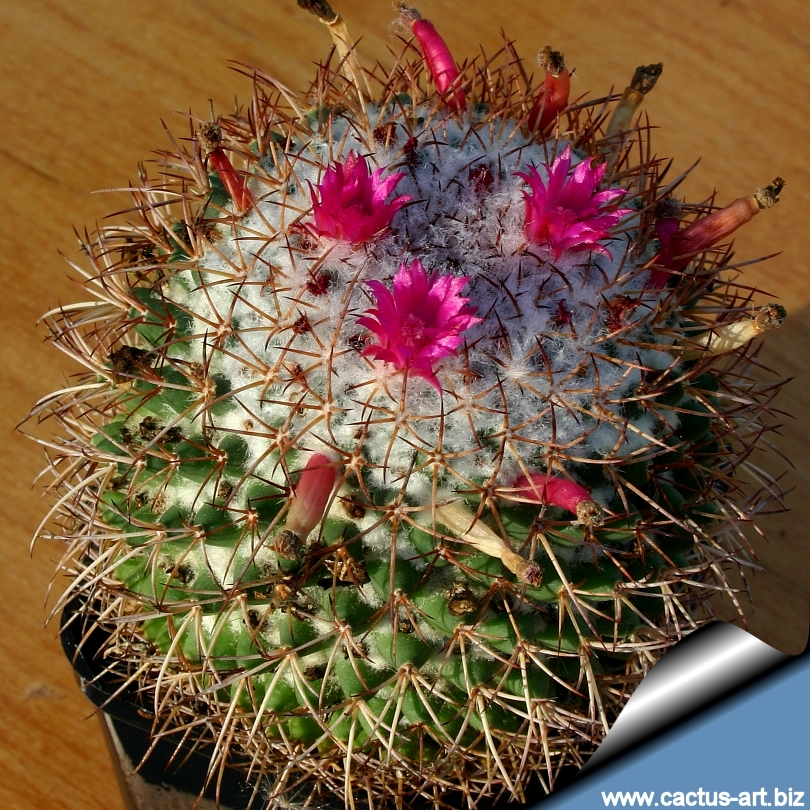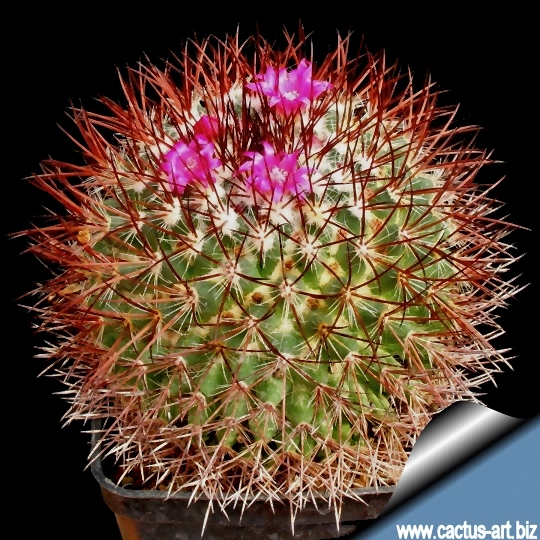|
|
|

M. rhodantha is an easy-to-flower and easy to grow cactus.
|
|
Description:
It is a
solitary or slowly
clumping
cactus.
Stem:
globular to short
columnar with
age, 10 cm
in diameter,
15-30 cm tall
Spines: It has 17-24 almost translucent clear white
radial spines and 4-7 grey/reddish to red-brown
central spines slightly
incurved which are longer than in the other
subspecies.
Flowers: The
flowers are a deep purple-pink to red.
Blooming season: This plant probably has the one of the longest
non stop blooming streak of any . It starts blooming in spring and
continues to bloom till autumn.
There are a number of varieties of
this highly variable cactus species, but not all are universally
recognized. Some authorities recognize the following varieties:
- Mammillaria rhodantha
subsp. rhodantha,
- Mammillaria rhodantha subsp. aureiceps
- Mammillaria rhodantha subsp. fera-rubra
- Mammillaria rhodantha subsp. mccartenii
- Mammillaria rhodantha subsp. mollendorffiana
- Mammillaria rhodantha subsp. pringlei
|
|


Advertising
|
|
|
|
|
Family:
Cactaceae (Cactus
Family) |
Scientific Name: Mammillaria
rhodantha Link & Otto
Synonym:
- Mammillaria rhodantha
subsp. rhodantha,
- Mammillaria droegeana,
- Mammillaria fuscata,
- Mammillaria rhodantha var. droegeana,
- ammillaria calacantha,
- Mammillaria bonavitii,
- actus rhodanthus,
- Neomammillaria rhodantha

|
|
|
|
Cultivation: Its qualities and ease of cultivation justify that it
is an old favorite. It doesn't requires any special treatment, but needs as
much light as possible (without burning the plant) to encourage the
heaviest spine formation. Regular water in summer, dry in winter. Frost
tolerance: -4° C.
Propagation: Seeds or
offsets.
Photo of conspecific taxa, varieties, forms and cultivars of
plants belonging to the
Mammillaria rhodantha
complex
(This
Taxon has several of synonyms (
like many other cacti) whit controversial varieties and subspecies and
comprises different forms, but where each form is linked to others by
populations of plants with intermediate characteristics):
|
|